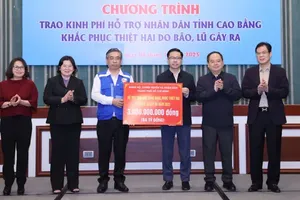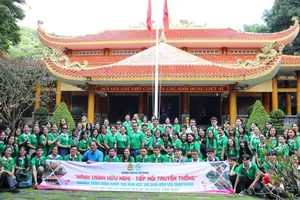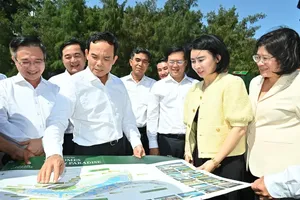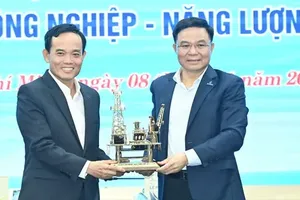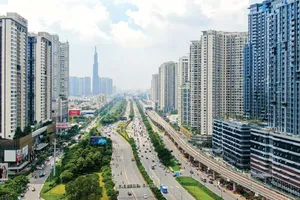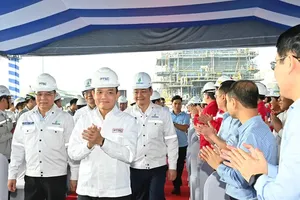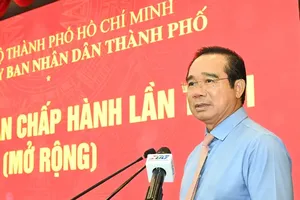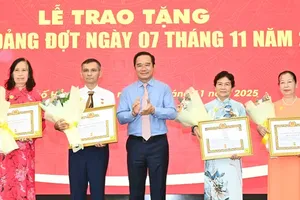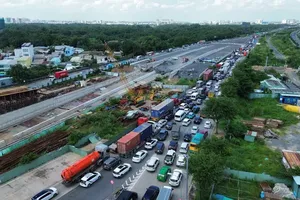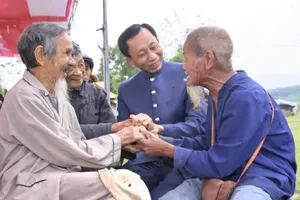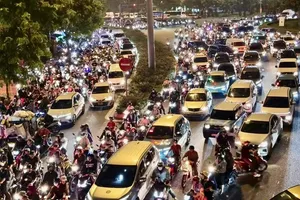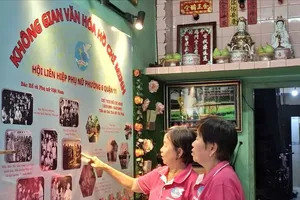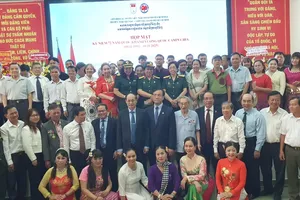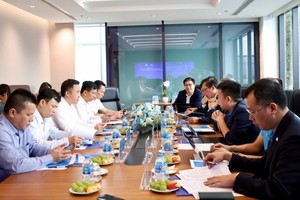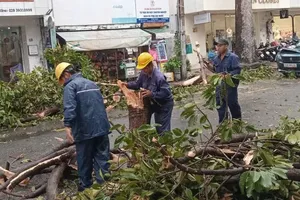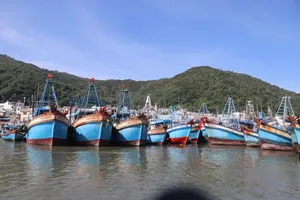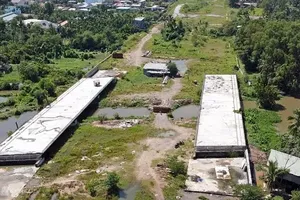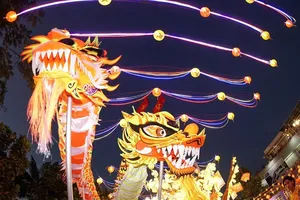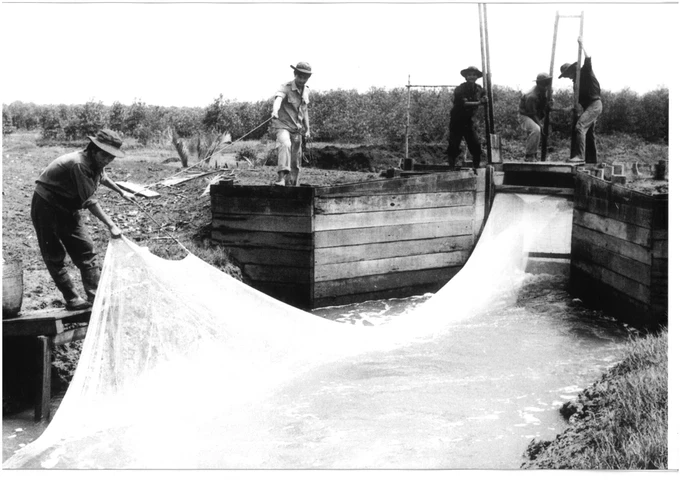
Transcending limitations, averting famine
April 30, 1975 remains a powerful symbol in the nation’s history, marking Vietnam’s entry into an era of independence and socialist development. From that pivotal moment, the unified strength and intellect of the Party Central Committee, people, and army were directed towards healing the wounds of war and building a new socialist Vietnam. This victory was a monumental achievement in the long struggle for liberation, guided by the Party and President Ho Chi Minh, a glorious chapter in the nation’s history.
The revolutionary enthusiasm following this victory was a significant advantage. However, the war’s lasting impact brought immense material and human devastation. The new government faced critical challenges, notably a damaged economy, the threat of famine, and complex issues inherited from the war. As a central urban area, the city became a focus for hostile activities.
The political and security landscape was complex, with remaining counter-revolutionary elements. Senior General Tran Van Tra, former Commander of the South Vietnam Liberation Army, recalled the vast initial tasks of managing war refugees from Quang Tri Province and the Central Highlands, providing famine relief, facilitating the return of displaced people, boosting production, and meeting the fuel needs of a city nearing four million residents.
The early post-liberation years saw Ho Chi Minh City struggling with numerous hardships. Production halted, essential goods were scarce, and a severe US embargo worsened the economic crisis and inflation. For the first time ever, city residents, even being near the Mekong Delta’s rice fields, faced meager meals of rice mixed with sweet potatoes and other coarse grains.
Assoc Prof Dr Nguyen Danh Tien, Head of the Institute of Party History (under Ho Chi Minh National Academy of Politics) noted that the city’s leadership prioritized securing food and reviving production, with rice supply being a daily concern for the municipal Party Committee.
Since April 30, 1975, HCMC has persistently grown into a leading hub for the economy, finance, culture, science, technology, and innovation, playing a vital role in national development and defense. The city today has a strong ambition for further progress, driven by its revolutionary heritage, unity, dynamism, creativity, and community spirit.
Standing Deputy Secretary Nguyen Thanh Nghi of the HCMC Party Committee
(Address at the scientific conference “HCMC – 50 Years of Construction, Protection, and Development”, organized by HCMC on March 25, 2025)
Facing the urgent need to feed 3.5 million residents daily, the then HCMC Party Committee Secretary Vo Van Kiet convened a crucial meeting with Nguyen Thi Rao (also known as Ba Thi) and other leaders to address famine relief. He instructed departments to allocate funds for Ba Thi’s teams to purchase rice in the Mekong Delta at market prices. This faced obstacles due to regulations and accusations of price undercutting, as the purchase prices were significantly higher than state-mandated rates by 3-4 times.
Despite contradicting established rules, the urgency of preventing famine led Secretary Vo Van Kiet to effectively approve Ba Thi’s procurement of rice in the Mekong Delta to feed the city. This pragmatic approach not only addressed the immediate crisis but also began to dismantle the isolation caused by trade barriers, paving the way for future economic reforms.
Unleashing potential, igniting production
Beyond immediate famine relief, the city's leadership focused on stimulating production and unlocking economic potential. Ho Chi Minh City’s economy was constrained by a bureaucratic, centrally planned system, hindering production and causing imbalances in trade, along with shortages of essential materials and goods.
Pham Chanh Truc, former Deputy Secretary of the HCMC Party Committee, recalled the municipal Party Committee’s visits to factories, engaging with workers to identify and remove obstacles. He recounted how Secretary Vo Van Kiet at that time, seeing workers eating meager rice rations, inquired if they would work extra shifts with more materials, to which they enthusiastically agreed. This marked the city’s initial steps in “breaking the fence” and “unleashing” potential, a spirit that spread across industries and neighboring provinces.
Recognizing the constraints, the City Party Committee acted decisively, formulating policies to overcome stagnation. Resolutions No. 9 (1979) and No. 10 (1980) fostered grassroots initiative and creativity, unleashing productive forces. The city utilized citizens’ assets and gold to import essential raw materials.
Simultaneously, production units gained autonomy in sourcing materials and forming partnerships. The “three benefits” policy prioritized the interests of the state, enterprises, and laborers. Innovative wage systems, including contract wages and productivity bonuses, were introduced.
Major General Assoc Prof Dr Vu Quang Dao, former Chairman of the Vietnam Military History Institute (under the Ministry of National Defense)
The people of Saigon – HCMC have every reason to be proud of the Great Spring Victory and the values forged by the Party and city dwellers during the resistance wars. Our pride extends to HCMC’s leading role in socialist construction, spearheading progress against hunger and poverty, aiming to build a civilized, modern, and compassionate city.
Thanks to these efforts, the city’s economy began recovering in the early 1980s. Industrial output surged, with an average growth rate of 8.17 percent during 1982-1986, a significant increase from the previous 2.18 percent. This progress laid the groundwork for the ‘Doi Moi’ (renovation) era.
Assoc Prof Dr Nguyen Danh Tien noted that despite post-war difficulties, the resilience and dynamism of HCMC allowed it to shed old constraints, identify new directions, and boldly “break through the fences”, creating an initial breakthrough on the eve of renovation.
HCMC’s economic achievements are a direct result of the unwavering effort, determination, and innovation of its Party Committee, government, and people. These represent valuable lessons for the city and the nation.
Assoc Prof Dr Phan Xuan Bien, Vice Chairman of the Vietnam Historical Science Association cum former Head of the Ideological and Cultural Commission of the HCMC Party Committee, emphasized that the city consistently prioritized the people’s interests, fostered self-reliance, transformed its mindset, and pioneered new approaches. While initial reforms were seen as rule-breaking, they were later recognized as the “first breakthrough” of renovation, embodying dynamism, creativity, courage, and responsibility – defining characteristics of HCMC itself.
